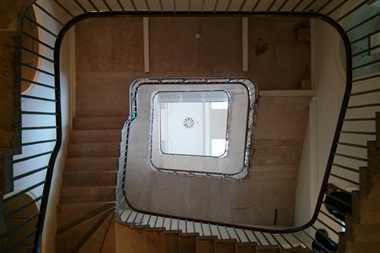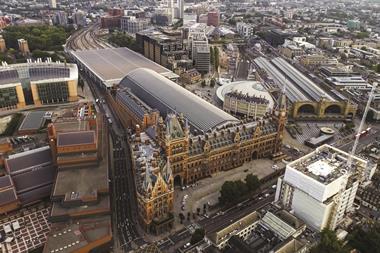The odds are if you have not been struck down by coronavirus, you will have caught coronaphobia.

I know I have. Aside from being in a permanent state of hypervigilance over the 2m social distancing rule, I’m constantly fretting over whether: I’ve had the virus and, if yes, whether I’ve got antibodies and am immune; I’ve washed my hands thoroughly enough after handling items from my neighbour and brother (a frontline nurse); or I’ve inadvertently given it to my parents via the weekly shop I do for them (gratefully received by dad sporting yellow Marigolds).
Now we can add to the mix the feelings of anxiety induced by the prospect of returning to the office. As Property Week went to press, Boris Johnson was due to unveil his phased lockdown exit plan to get the nation back to work.
Reports suggest social distancing measures will be every bit as stringent as feared, with canteens and communal areas closed, working hours staggered, hotdesking banned, sharing of pens forbidden and vulnerable people including the over-70s, pregnant women and severely obese expected to work from home.
While many of us would happily take working from home over this grim new office reality any day, we may soon have no choice but to return. On the plus side, the results of our snapshot PW Covid-19 Survey suggest most people in the industry don’t expect to be heading back in the next few weeks. Fewer than one in 10 of you think you will be back by the end of this month, while more than a third expect to return in June and a surprising 30.7% do not expect to be back until after July.
That is if you are not on furlough. More than half of survey respondents report that their firms have furloughed staff, while more than a fifth say their firms have suspended bonuses, more than a quarter say people have been asked to take pay cuts and more than a tenth report redundancies.
Even if fewer people do return to work in the first phase, many businesses will struggle to comply with the new government guidelines. Recent Colliers International research estimated that 60% of the UK’s 11.8 million desks would be unusable if a 2m gap were introduced.
There is also the question of how the limited number of lifts and toilets in many buildings can be safely used, and many people will understandably be concerned about using public transport.
The challenges don’t just relate to how we use existing space. Developers working on new-build offices also need to rethink their plans. Is the open-plan office dead? Should any communal space be included? Could cubicles make a return?
At least there is scope to modify traditional and yet-to-be built schemes. Not so flexible and co-working space, some of which is based on densities of 30 sq ft to 40 sq ft per workstation and much of which relies on hotdesking.
The future looks bleak for the sector, which is why operators are calling for the government to do more to support them. However, it is not the sector that survey respondents think will be hardest hit by the lockdown. That dubious honour goes to restaurants and pubs.
No wonder more than half of those surveyed are more pessimistic than they were at the start of the lockdown and almost a quarter fear the current crisis will be worse than the Great Depression. In these strangest of times, back to work clearly will not mean back to business as usual.






























No comments yet